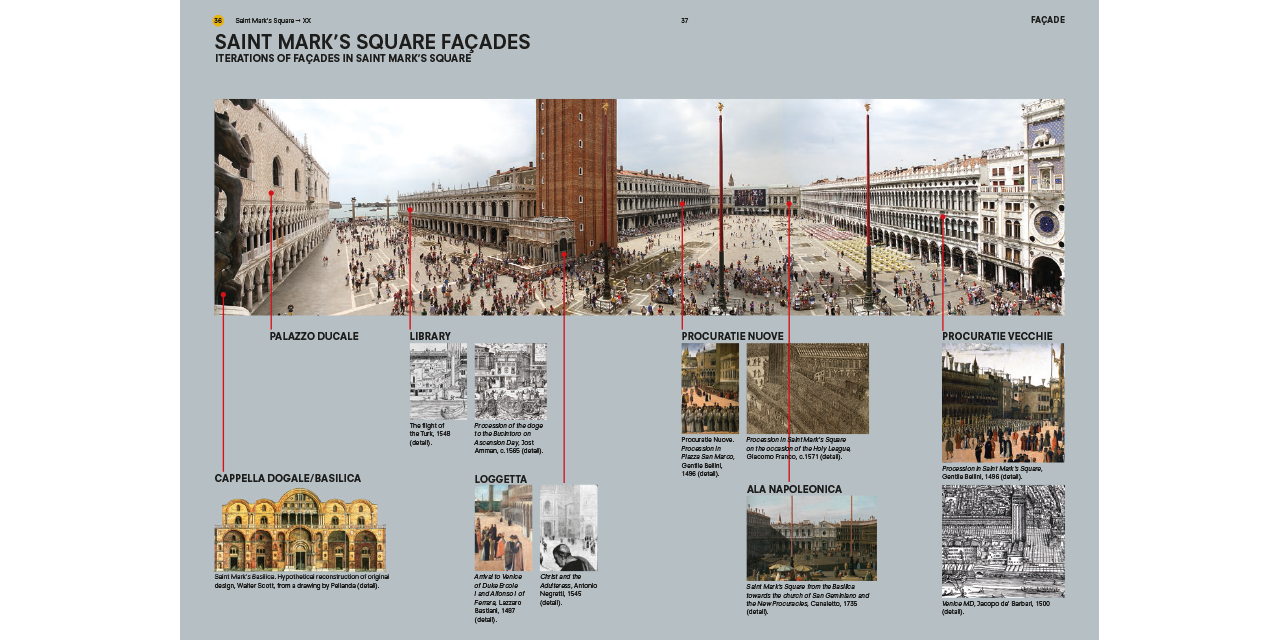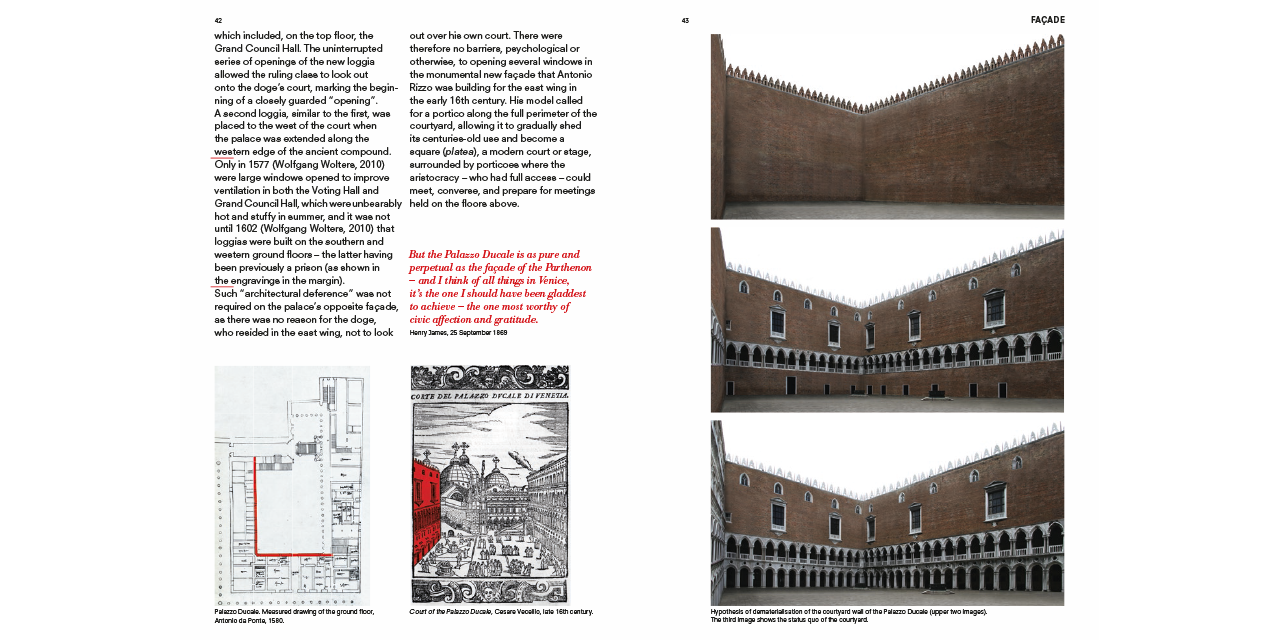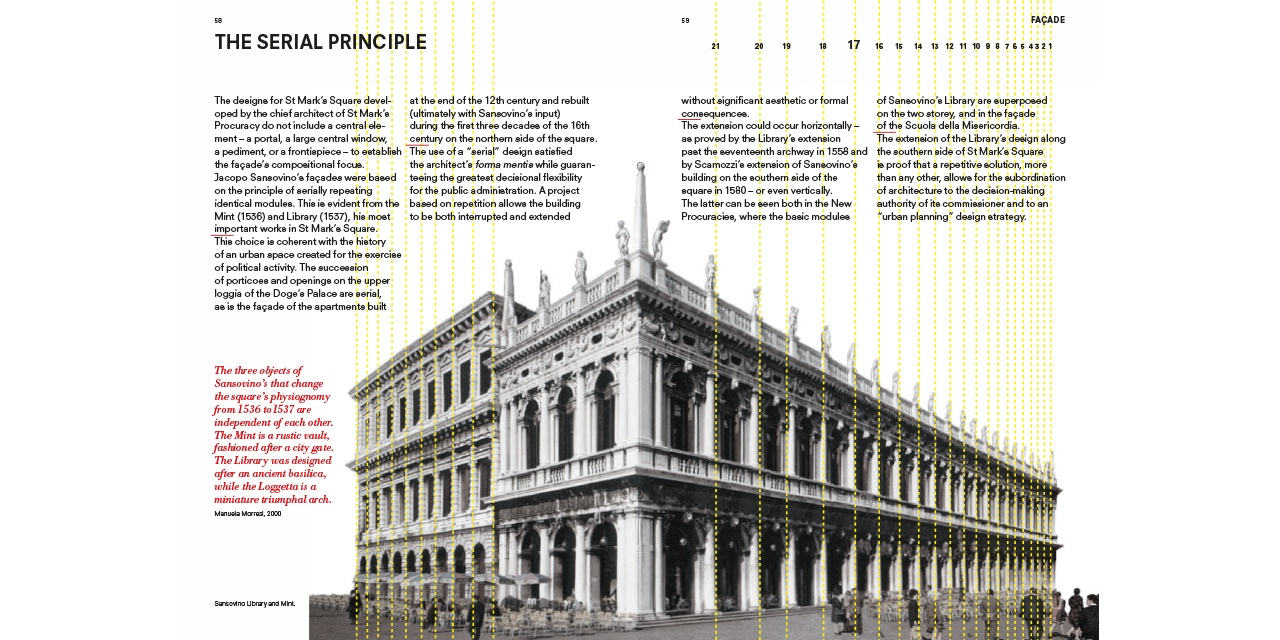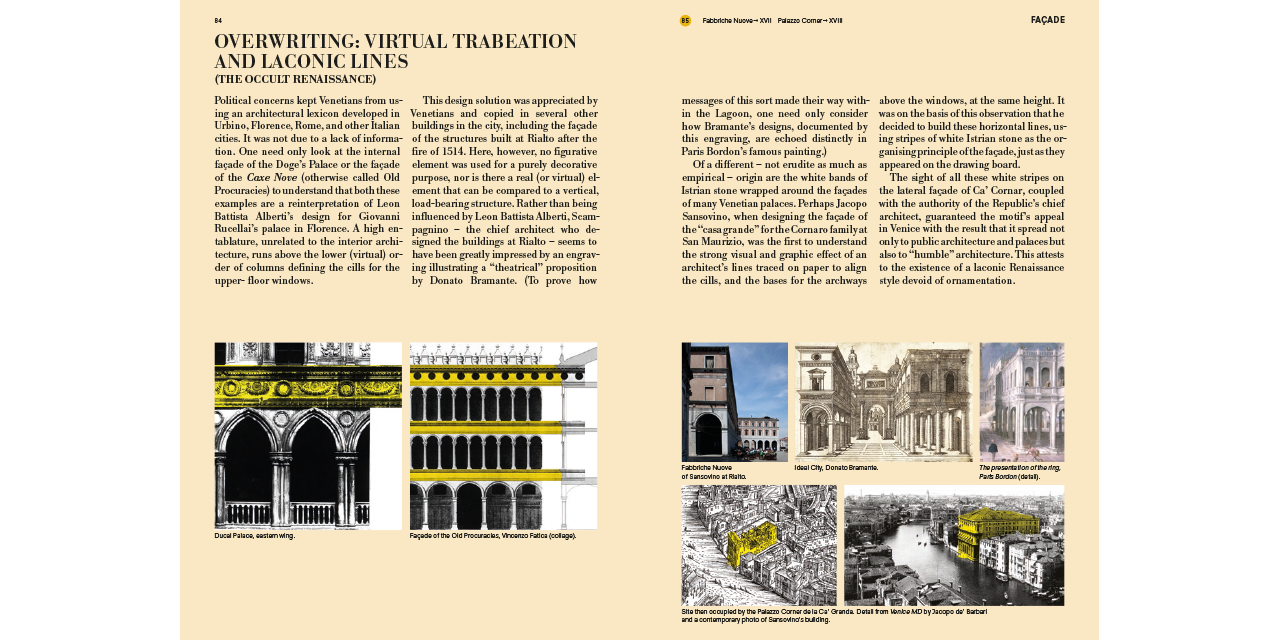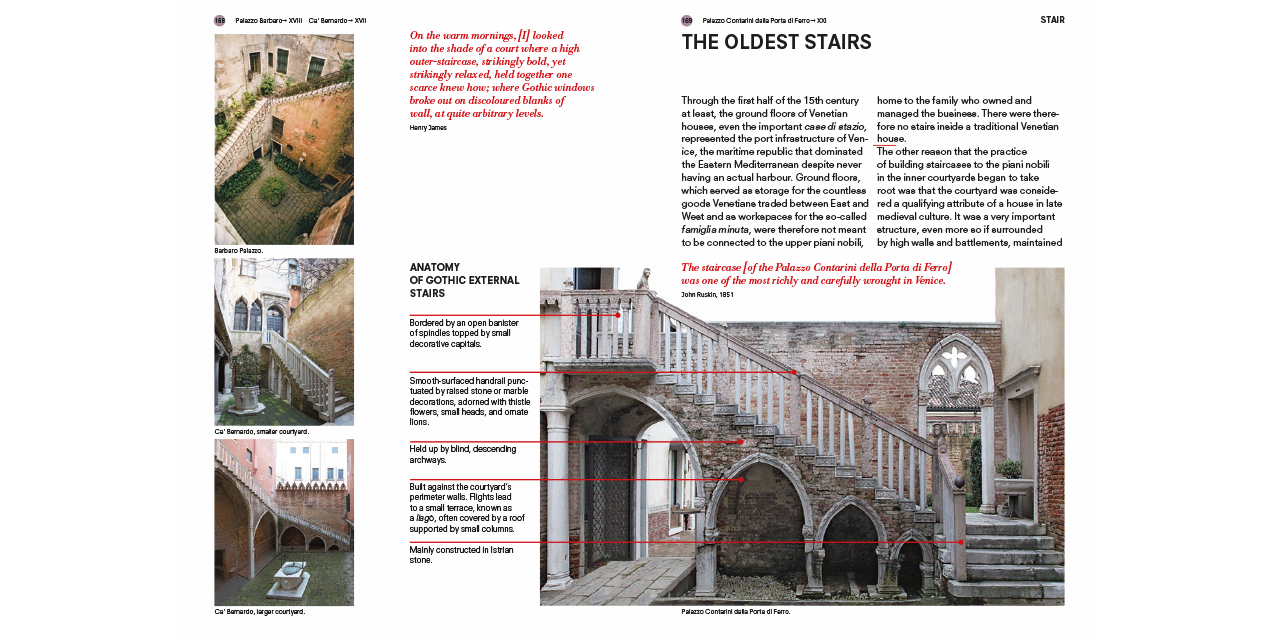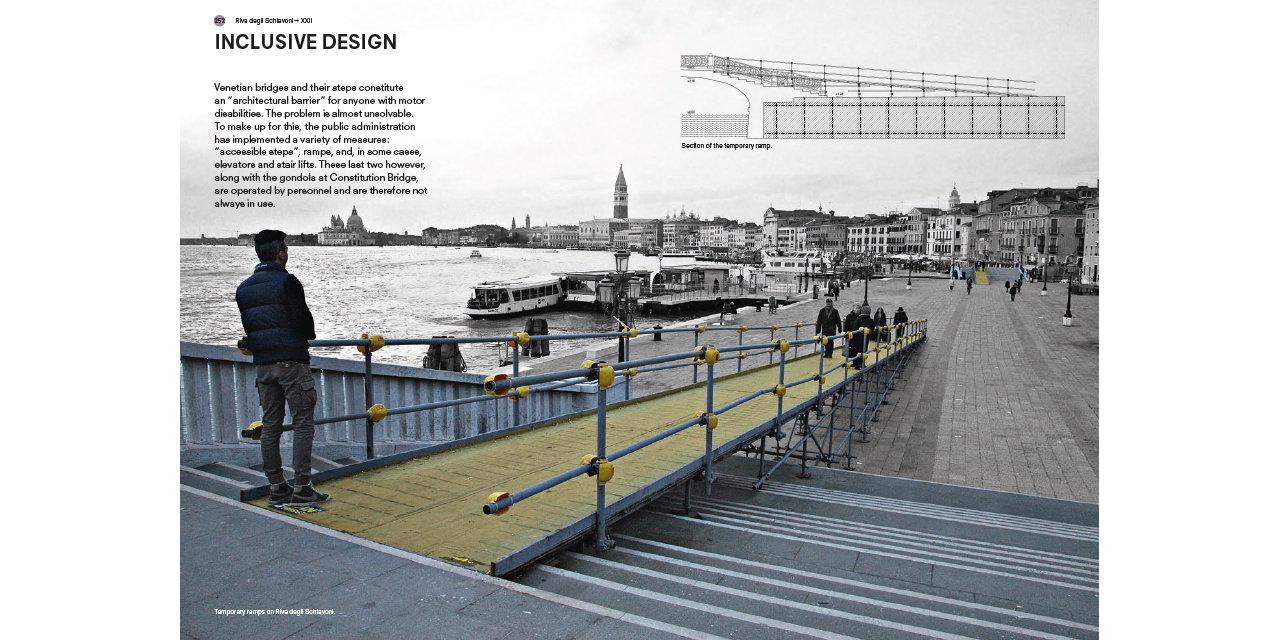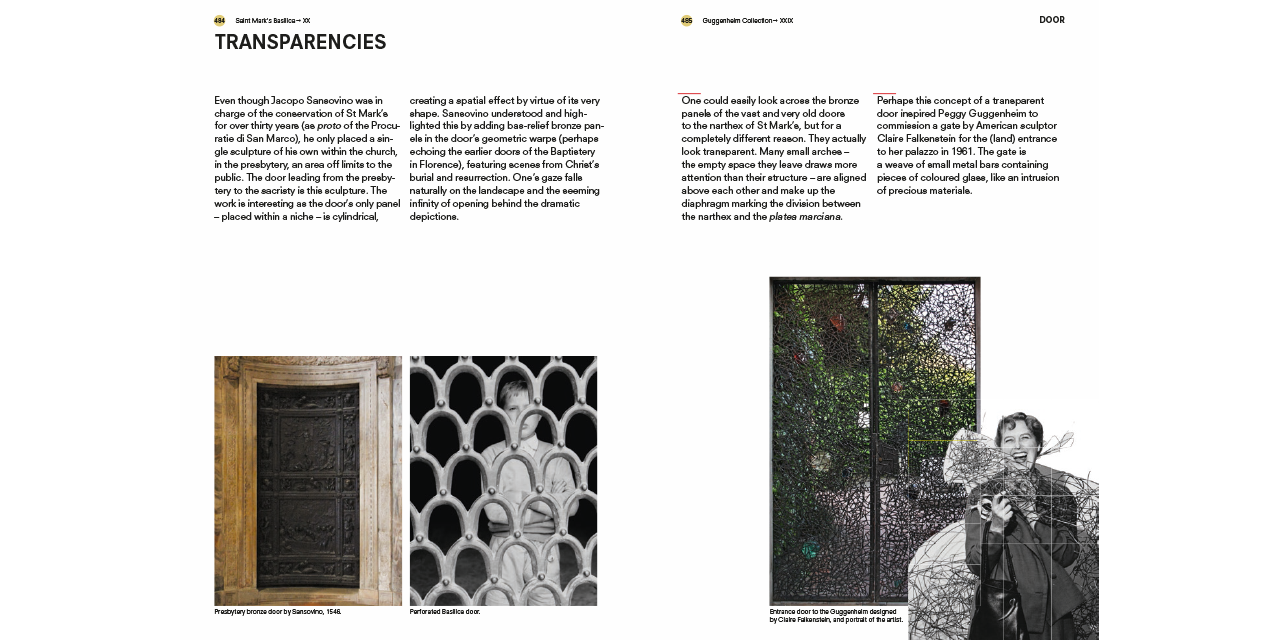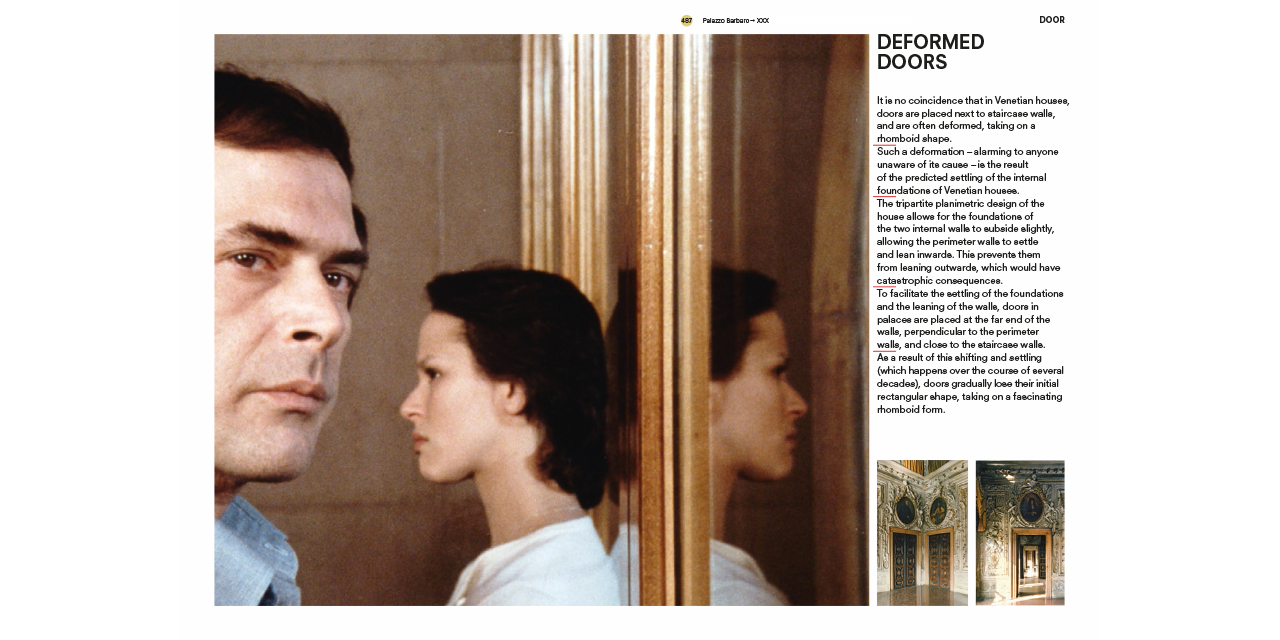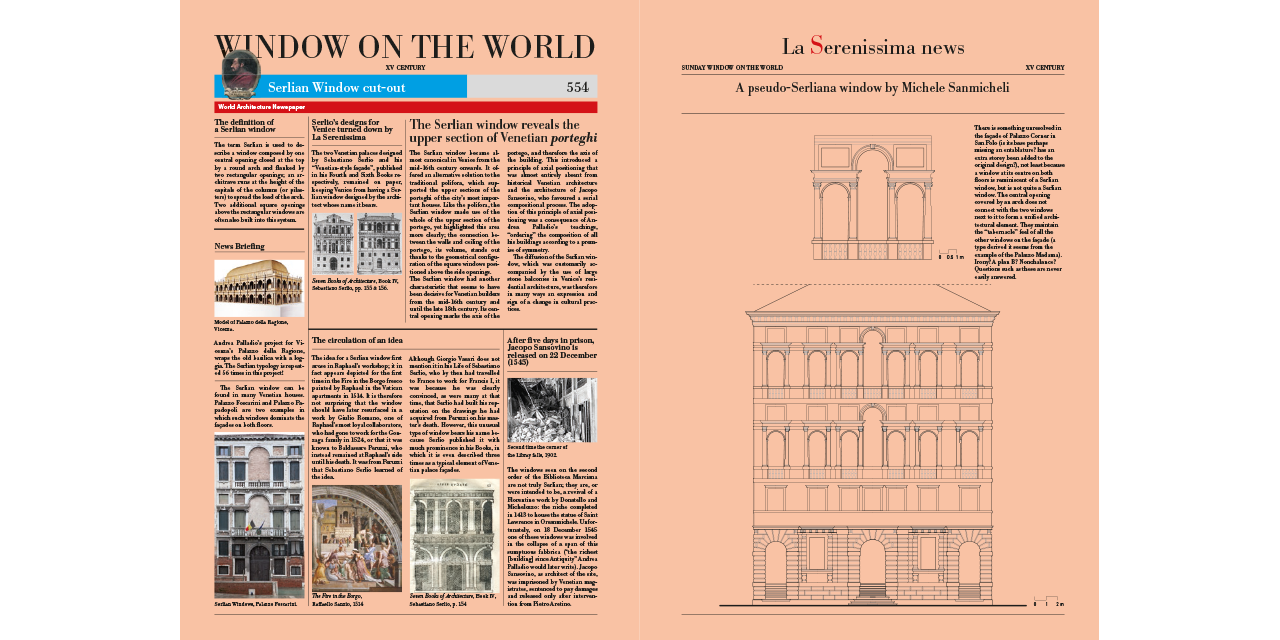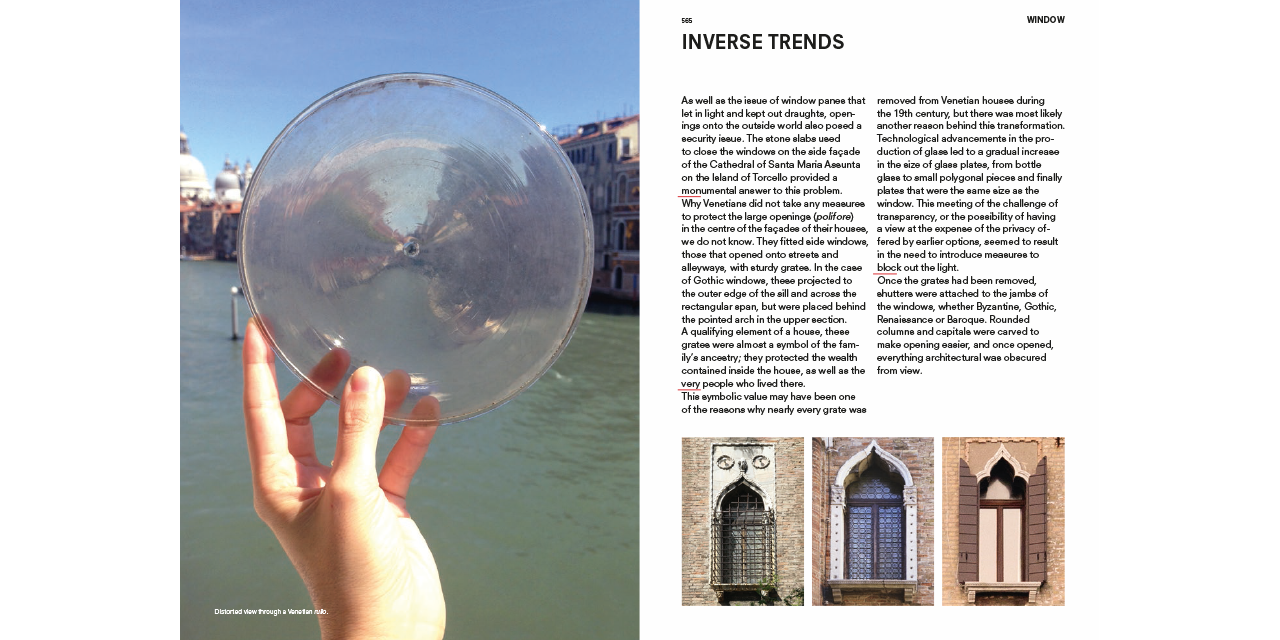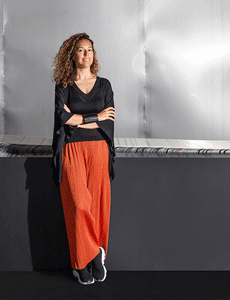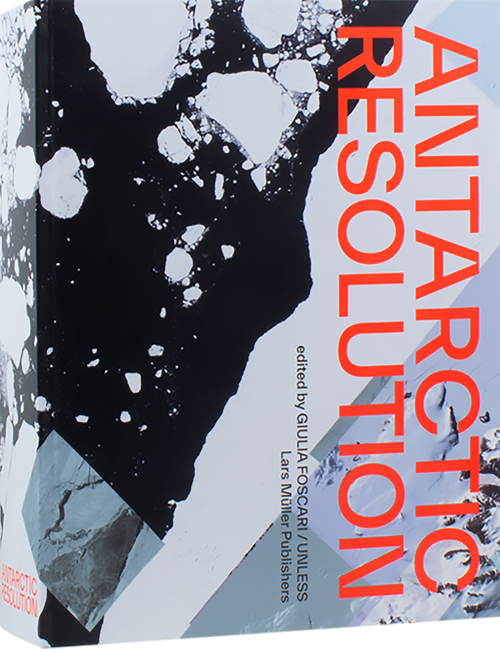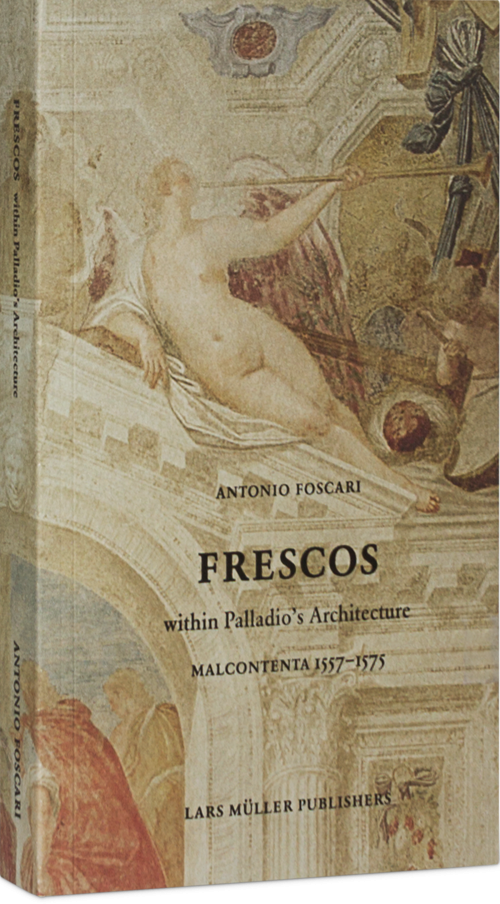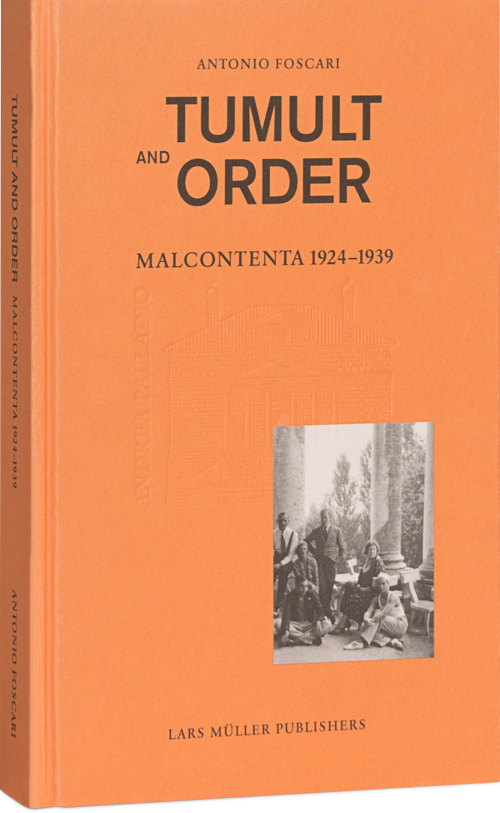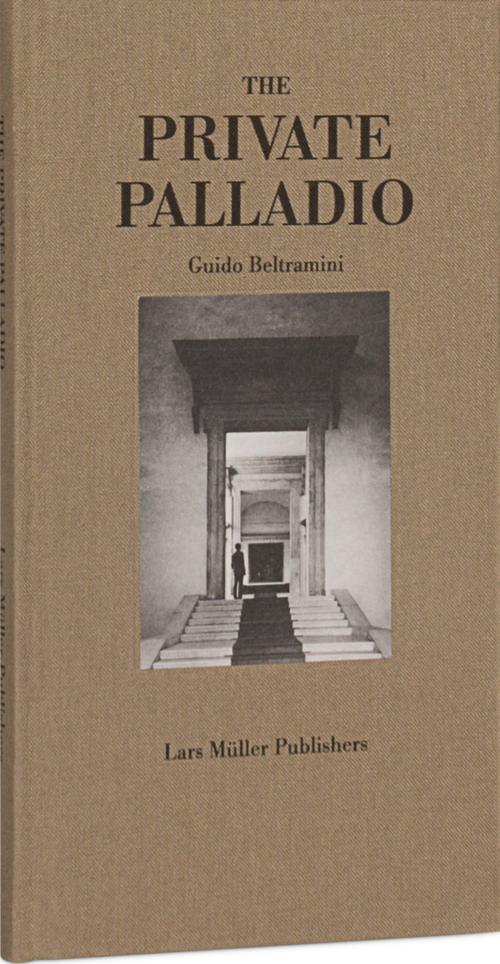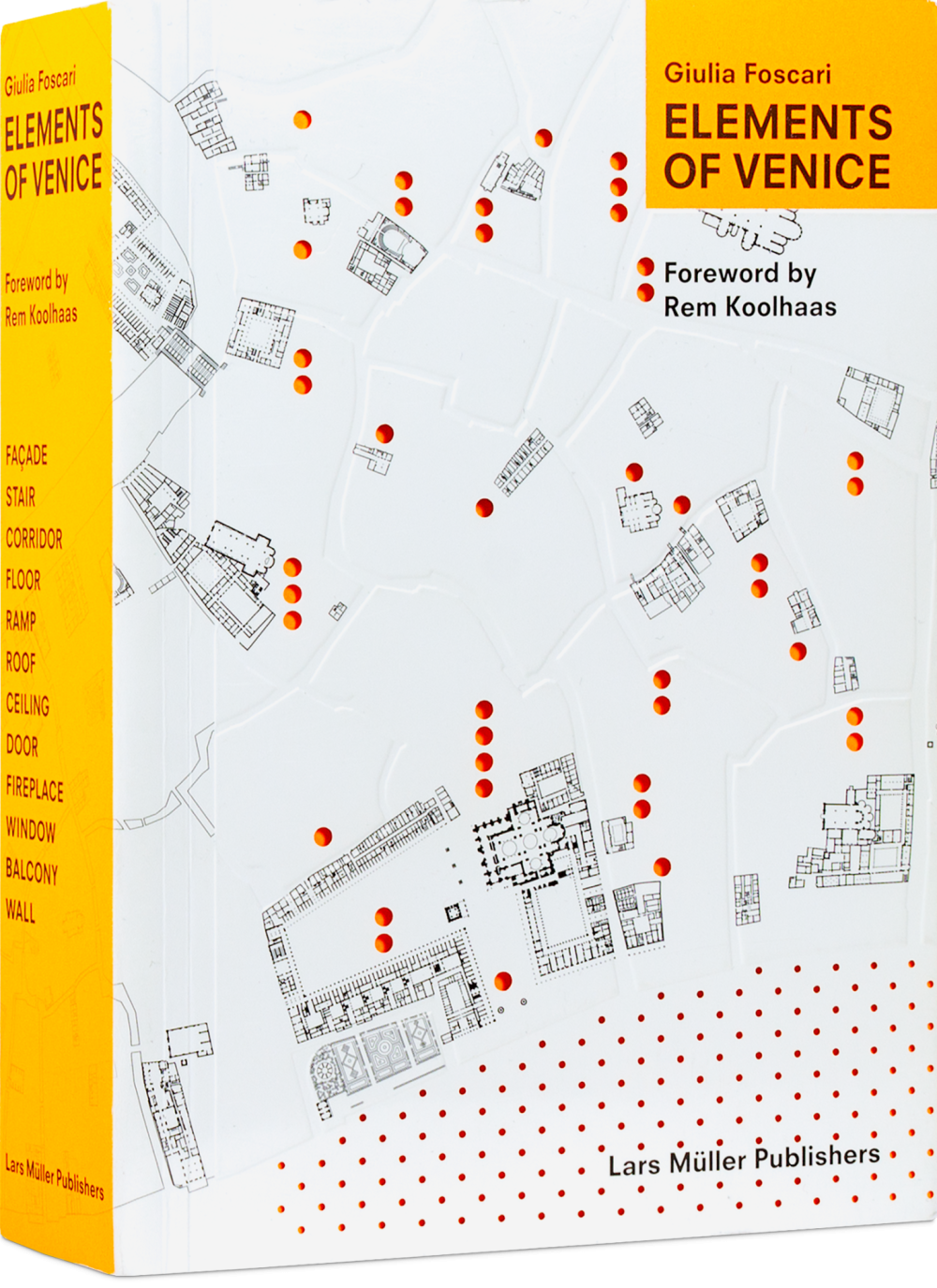
Elements of Venice
Developed as a parallel research project of Fundamentals—the exhibition at the 14th Venice Architecture Biennale curated by Rem Koolhaas—the book offers insights on Venetian façades, stairs, corridors, floors, ramps, ceilings, doors, hearths, windows, balconies and walls. “Product not [only] of the mind but of societal organization” the elements are isolated from their picture-perfect context and from the postcard view of Venice that is impressed in our retinas, introducing the reader—through a combination of collages, drawings, photographs, paintings, film stills and quotes—to a radically new way of seeing Venice. Like a camera obscura photograph cuts through the often irrelevant embellishments of architecture to reveal the underlying skeleton of a building (i.e. its elements), this guide will allow the reader to better understand the fundamental transformations that have shaped Venice during the past ten centuries. This city, which for many is—architecturally speaking—permanently frozen in time, has in fact often been at the forefront of challenging the architectural conventions and underwent an unprecedented urban transformation.
Developed as a parallel research project of Fundamentals—the exhibition at the 14th Venice Architecture Biennale curated by Rem Koolhaas—the book offers insights on Venetian façades, stairs, corridors, floors, ramps, ceilings, doors, hearths, windows, balconies and walls. “Product not [only] of the mind but of societal organization” the elements are isolated from their picture-perfect context and from the postcard view of Venice that is impressed in our retinas, introducing the reader—through a combination of collages, drawings, photographs, paintings, film stills and quotes—to a radically new way of seeing Venice. Like a camera obscura photograph cuts through the often irrelevant embellishments of architecture to reveal the underlying skeleton of a building (i.e. its elements), this guide will allow the reader to better understand the fundamental transformations that have shaped Venice during the past ten centuries. This city, which for many is—architecturally speaking—permanently frozen in time, has in fact often been at the forefront of challenging the architectural conventions and underwent an unprecedented urban transformation.
Winner of the DAM Architectural Book Award 2015
“To say Giulia Foscari's book is a beautifully put together trove of information about Venice's luxuriantly scenic architecture sounds gushy. Actually, it is an understatement.”
– Architectural Record
